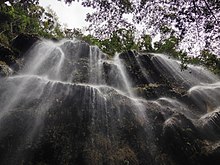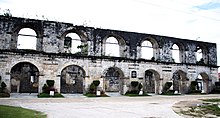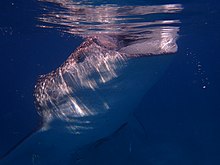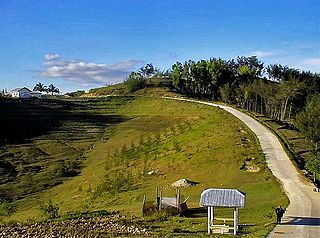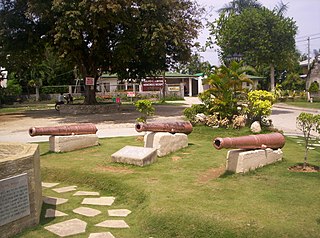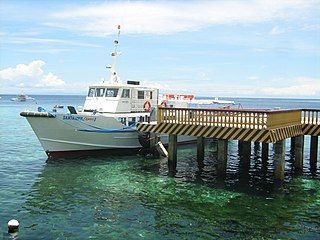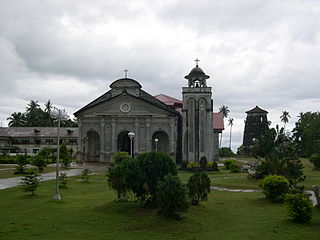Oslob | |
|---|---|
| Municipality of Oslob | |
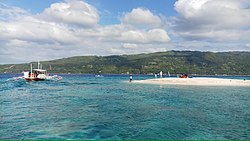 Sandbar of Sumilon Island | |
 Map of Cebu with Oslob highlighted | |
Location within the Philippines | |
| Coordinates: 9°33′N123°24′E / 9.55°N 123.4°E | |
| Country | Philippines |
| Region | Central Visayas |
| Province | Cebu |
| District | 2nd district |
| Founded | 1848 |
| Barangays | 21 (see Barangays) |
| Government | |
| • Type | Sangguniang Bayan |
| • Mayor | Ronald L. Guaren (1Cebu) |
| • Vice Mayor | Roger O. Trapa (NUP) |
| • Representative | Edsel A. Galeos |
| • Municipal Council | Members |
| • Electorate | 20,972 voters (2022) |
| Area | |
| • Total | 134.75 km2 (52.03 sq mi) |
| Elevation | 142 m (466 ft) |
| Highest elevation | 726 m (2,382 ft) |
| Lowest elevation | 0 m (0 ft) |
| Population (2020 census) [3] | |
| • Total | 29,264 |
| • Density | 220/km2 (560/sq mi) |
| • Households | 6,995 |
| Economy | |
| • Income class | 4th municipal income class |
| • Poverty incidence | 22.60 |
| • Revenue | ₱ 179.4 million (2020) |
| • Assets | ₱ 975.7 million (2020) |
| • Expenditure | ₱ 126.2 million (2020) |
| • Liabilities | ₱ 77.9 million (2020) |
| Service provider | |
| • Electricity | Cebu 1 Electric Cooperative (CEBECO 1) |
| Time zone | UTC+8 (PST) |
| ZIP code | 6025 |
| PSGC | |
| IDD : area code | +63 (0)32 |
| Native languages | Cebuano Tagalog |
Oslob, officially the Municipality of Oslob (Cebuano : Lungsod sa Oslob; Hiligaynon : Banwa sang Oslob; Tagalog : Bayan ng Oslob), is a 4th class municipality in the province of Cebu, Philippines. According to the 2020 census, it has a population of 29,264 people. [3]
Contents
- Geography
- Topography
- Soil Type
- Land Classification
- Barangays
- Climate
- Demographics
- Economy
- Toslob Festival
- Tourist attractions
- Baluarte
- Church of the Immaculate Conception
- Cuartel
- Sumilon Island
- Whale shark watching
- Tumalog Falls
- Transportation
- Education
- References
- Sources
- External links
Oslob is bordered to the north by the town of Boljoon, to the west are the towns of Ginatilan And Samboan, to the east is the Cebu Strait, and to the south is the town of Santander. It is 116 kilometres (72 mi) from Cebu City.





